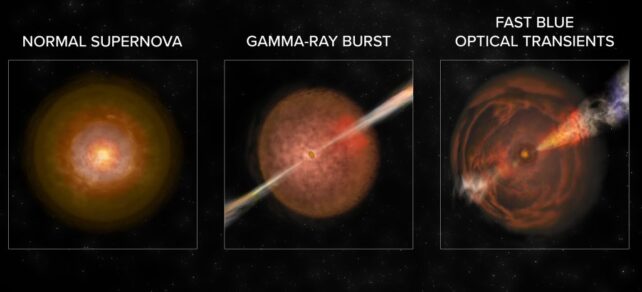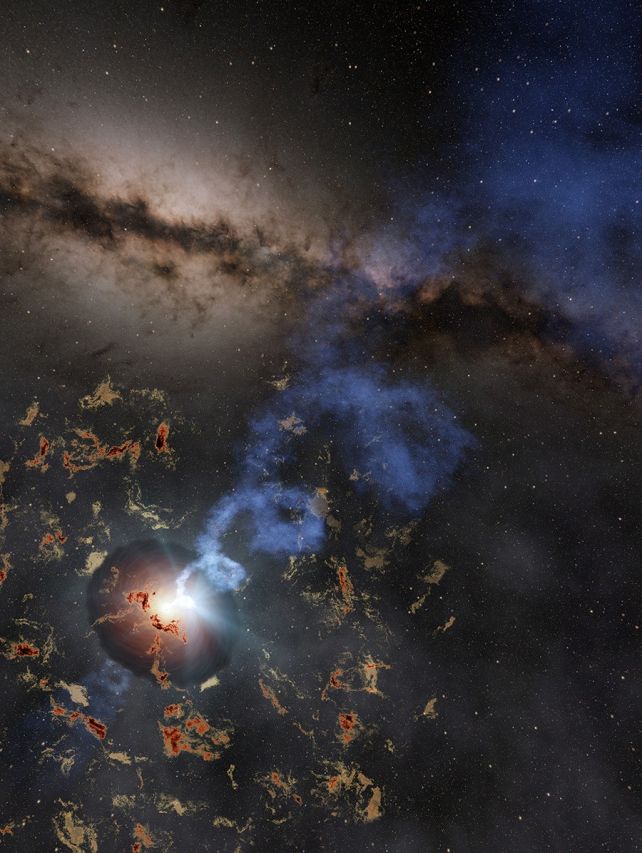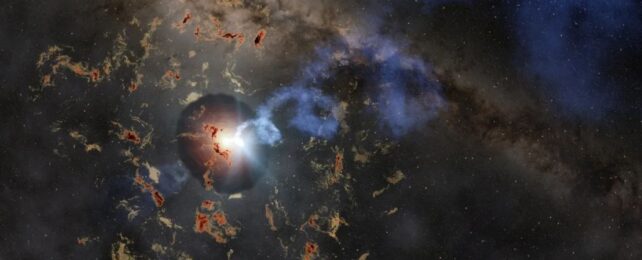A truly strange and rare kind of cosmic kaboom just got a lot more peculiar.
An explosion some billion light-years away observed in 2022 known as the Tasmanian Devil (AT2022tsd) has been caught repeatedly flaring with the strength of 100 billion Suns – the same power as the initial explosion – for months following the initial flash.
The explosion belongs to a rare category known as luminous fast blue optical transients, or LFBOTs, of which only a handful have been discovered. And the repeat behavior of the Tasmanian Devil is the latest in a litany of these LFBOTs doing stuff that's really, really odd.
"An event like this has never been witnessed before," says astrophysicist Jeff Cooke from Swinburne University of Technology and the ARC Centre of Excellence in Gravitational Wave Discovery (OzGrav) in Australia.
LFBOTs were first discovered back in 2018 with an explosion that came to be known as the Cow. A few more have been picked up since then, usually named after animals, and they're just … weird.
They're incredibly bright, at least 10 times brighter than a normal supernova, and incredibly hot, which gives them their bluish hue.

They're also very brief. Usually, supernovae flare to a peak in brightness, then fade over the ensuing weeks and months. LFBOTs are more like a slow-ish camera flash in the depths of space: there and gone again mere days later.
Because they're so weird, astronomers have been puzzling over what the cause could be. Generally, the bright explosions we detect in space consist of dying stars going supernova, or collisions between neutron stars. The current best candidate for LFBOTs is the formation of a black hole in an unusual type of core-collapse supernova.
But each LFBOT seems to have its own quirks. The Cow exhibited an atypically flat, pancake-like explosion. The Finch, detected earlier this year, was spotted in intergalactic space, some 50,000 light-years from the nearest galaxy. So any explanation needs to account for all these oddities.
The Tasmanian Devil, according to the new analysis led by astronomer Anna Ho of Cornell University, with an international team of over 70 co-authors, seems to point to the formation of a neutron star or black hole.
They used a new way to monitor the spot at which the LFBOT was first detected on 7 September 2022, and detected at least 14 flares in the 120 days subsequent to the initial explosion. And they were odd flares: at least as bright as the Tasmanian Devil itself, but lasting as short a time as just a few minutes.
"Amazingly, instead of fading steadily as one would expect, the source briefly brightened again, and again, and again," Ho says. "LFBOTs are already a kind of weird, exotic event, so this was even weirder."
The precise cause of the flaring is unknown, but signs point to a compact object like a black hole, the researchers say.
"It pushes the limits of physics because of its extreme energy production, but also because of the short duration bursts," Cooke says. "Light travels at a finite speed. As such, how fast a source can burst and fade away limits the size of a source, meaning that all this energy is being generated from a relatively small source."

Black holes themselves emit no light that we can detect, but there are mechanisms whereby their presence might squeeze light out of nearby material. For example, if the core of a massive star collapsed into a black hole after ejecting its outer envelope, gas from that outer envelope could fall back onto the black hole.
When a black hole accretes material, it can channel it into high-speed jets that are captured by magnetic field lines around the outside of the event horizon and accelerated towards the poles, where it is launched into space as streams of plasma. The flashes could be linked to this accretion and ejection process. Or they could be linked to some other astrophysical process that we're yet to identify.
Whatever it is, the Tasmanian Devil is giving us a window into LFBOTs, black holes, and perhaps the life cycles of stars that we've not seen before.
"The corpse [of the star] is not just sitting there, it's active and doing things that we can detect," Ho says. "We think these flares could be coming from one of these newly formed corpses, which gives us a way to study their properties when they've just been formed."
The findings have been published in Nature Astronomy.
